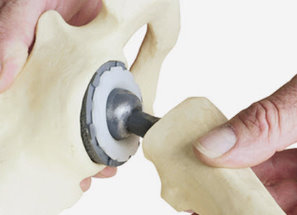Hip Implant Complications and Failures
Hip Implant Failures which is a common cause of hip replacement surgery. Hip replacement is the most common surgical procedure in the United States. In 2016, more than 4.2 million Americans had hip replacements, and nearly half of them were performed by a hip implant. In this section, we will look at the causes of implant failure and how to prevent them. We will also discuss the risks and benefits of the various types of implants and the different ways that they can be used.
Following are the causes of Hip Implant Failures:
-
Injury to the hip joint (hip dislocations) or joint deformity (joint dislocation) Injury to bone (osteoporosis, osteopenia, etc.) or to soft tissue (arthritis, arthritis of the knee, hip arthritis, knee osteoarthrosis , or osteomyelitis)
-
Injury of bone or soft-tissue: Fractures of bones, fractures of soft tissues, fracture of ligaments, ligament ruptures, and other fractures.
-
Injury or injury to the bone: Bone fractures, bone fractures in soft areas, or bone injuries.
-
Bone marrow disease: The disease of marrow cells in the bone marrow.
-
Osteopetrosis: Bone loss due to a lack of calcium.
The above cause of hip implant failure further explore: Any of a number of conditions that can lead to a hip fracture or hip replacement. The most common of these conditions is a degenerative hip disorder (such as osteogenesis imperfecta or OOA) that leads to degeneration of bone and soft-tissue tissue. A hip dissection (an injury to one or more bones in the hips) can also cause a fracture. In some cases, the cause is as simple as a poor fit between the hip and the rest of the body.
Hip Implant Loosening Complications and Symptoms
Loosening Symptoms is a common problem for many people. The hip joint may become loose and pain can be felt in the hip. In some cases, it could lead to amputation. It might also help to get an MRI scan so that you know what kind of surgery you need.
The most common type of hip implant loosening, or “diastasis”, is called a hemimorph or an epidural hematoma. This can be caused by trauma to the femoral head, by an injury to an internal or external hip joint, and by a congenital defect of the hip. It is also known as a hip replacement.
emorrhage is a common complication of an implant, but it is not the same as an embolism or a blood clot in the leg. The blood clots are usually small and go away on their own. Hemimoria is the name given to the swelling of the blood vessels that lead from the hip to your leg, usually the first signs after surgery. The swelling can be so severe and dangerous that you should have immediate surgery.
Hemomoria can look like a lot of other symptoms, such as pain, swelling, and redness. Sometimes, the pain is so severe that you can't walk. Other times, it's so mild that it goes away on its own. You may be able to walk without pain, but you may have to use crutches or a walker for the rest of your life. If you have a blood clot, you will need to have it removed. Diastatics are the most serious type. They are caused by a hole in your hip bone. This hole is usually made when the implant is inserted into your pelvis. It is called diastasis recti, and it can be very painful.
Signs of Loosening Symptoms
-
The first sign is that the Hip joint becomes loose and unstable. It may be due to a pinched ligament. This can occur because you have been working on an unstable joint. When this happens, the ligaments in the hip become pinching and the joint will become unstable and you may experience pain.
-
The second sign of loose Hip Joint is when you can't bend your hip at all.
The third sign that you have loose hip joint is if you feel pain in your back. This is because the muscles of the back are tight and it is difficult to bend the spine.

Contact us for a free case evaluation
Contact an attorney right away to discuss your case.
You deserve compensation for your injuries.